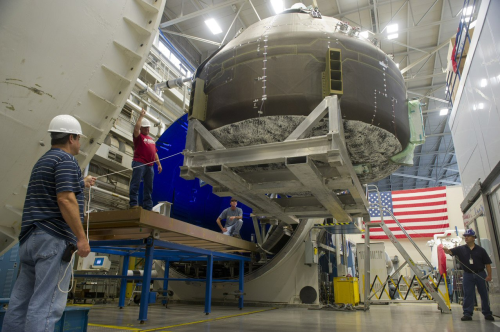
Data gained during these tests will aid in the design of future composite space structures.
During the vacuum test, the chamber is sealed and purged to a level a space vehicle would encounter on orbit to evaluate the composite material's integrity. The crew module is filled with helium gas to allow engineers to detect any leaks that may occur as pressure increases. Vacuum testing will yield a leak rate for the entire structure, then the team works to repair small leaks that may arise to improve the hardware's performance.
The test team includes members from the Marshall Center; NASA's Langley Research Center in Hampton, Virginia; Goddard Space Flight Center in Maryland.; Kennedy Space Center in Florida; and the Boeing Company in Huntsville.
To date, the team has completed ten tests and will continue testing through the end of the summer.
Composite Crew Module
The crew module was designed to test new materials and fabrication techniques that may be used in future space structures, which will be constructed of both metals and composites.
The Composite Crew Module (CCM) Project is led by NASA's Engineering and Science Center at Langley.
Fabricated at Alliant Techsystems in Iuka, Mississippi, the CCM was constructed in two parts using a hand lay-up technique, combining carbon fibre epoxy composite and an aluminium honeycomb core. The two parts were joined together and then bonded in a process developed at the Marshall Center for the crew module.
The project team is a partnership between NASA and industry.




